This is the last post in a four part series in partnership with Dawn dishwashing liquid. You can see the first three posts here, here, and here. This series is aimed at bringing awareness to the wildlife rescue rehabilitation centers that Dawn supports and honoring the many amazing volunteers that contribute to this cause. As always, opinions are 100% my own.
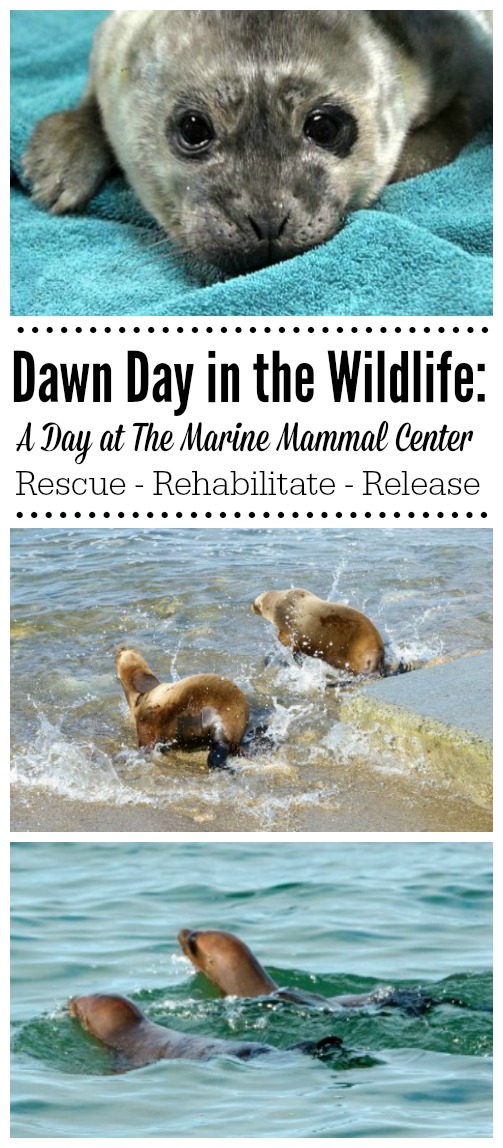
Back in September I went down to California for Dawn’s Day in the Wildlife Progam to tour The Marine Mammal Center in Sausalito and learn more about International Bird Rescue. Both of these organizations are amazing facilities devoted to the rescue and rehabilitation of animals and are primarily run by their huge team of volunteers.
During my stay, I had the unique opportunity to go behind the scenes at TMMC and experience, first hand, a little piece of the amazing work that their volunteers do on a daily basis. It truly was an inspiring day and I would encourage all of you to visit their center if you are going to be in the area. I know my boys would have had a fabulous time and I hope to make it back down there with them some day.
For me, the highlight of the whole experience was definitely witnessing the release of three rehabilitated sea lions {2 yearlings named Apostrophe and Row, and a subadult named Fritters} back into the wild. All of them had been rescued due to poor weight and malnutrition, and Row had also had a fishing hook caught in her flipper that required medical attention. After 3-4 weeks of receiving care at The Marine Mammal Center, they were all ready to return to their home.
It was a beautiful day for a release as we drove a couple of hours up the coast to Chimney Rock in Point Reyes.
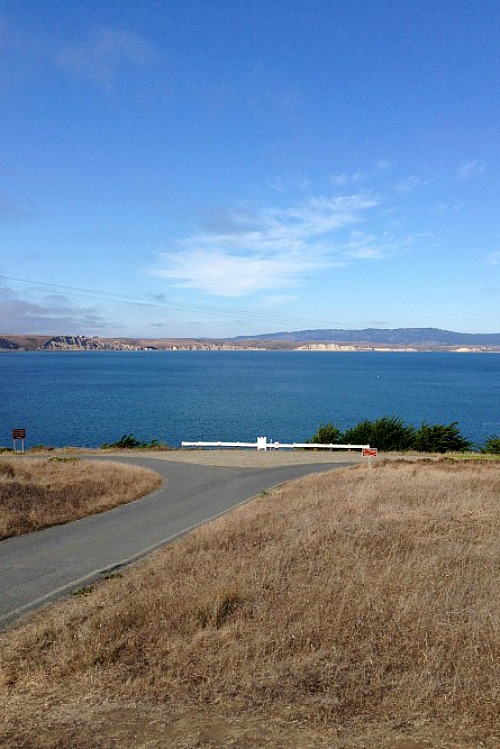
We could feel the sea lions excitement as they started to sense where they were. They rocked in their cages, eager to get out back to their home.
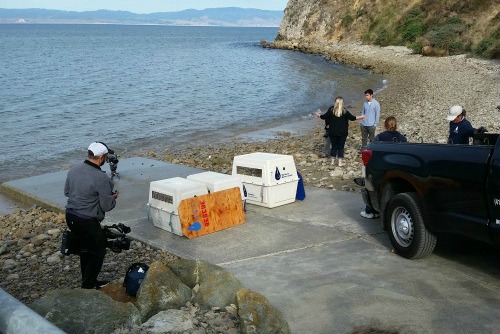
Fritters was released first. She came out of the cage a little hesitantly, but as soon as she hit the water, she was off!
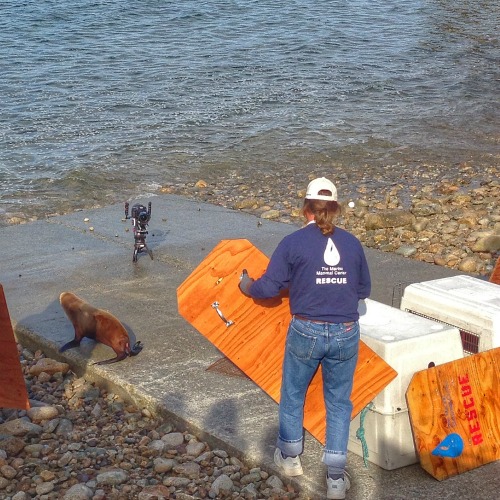
{Photo Credit: Susan Goldman}
The little yearlings, on the other hand, wasted no time making a mad dash for the water.
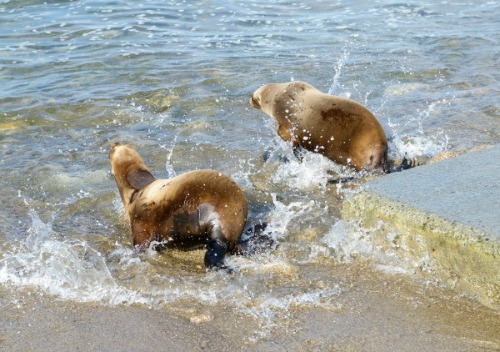
{Photo Credit: Susuan Goldman}
They dove and surfaced quite a few times together and I swear that you could feel their joy!
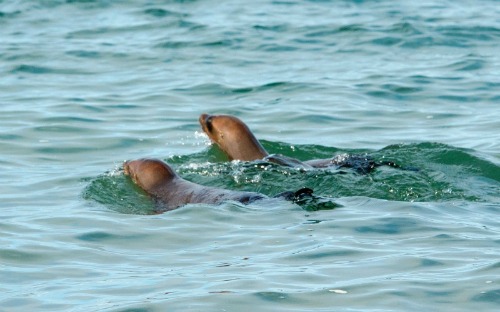
{Photo Credit: Susan Goldman}
Finally they gave each other a little kiss and happily swam off to explore their new found freedom.
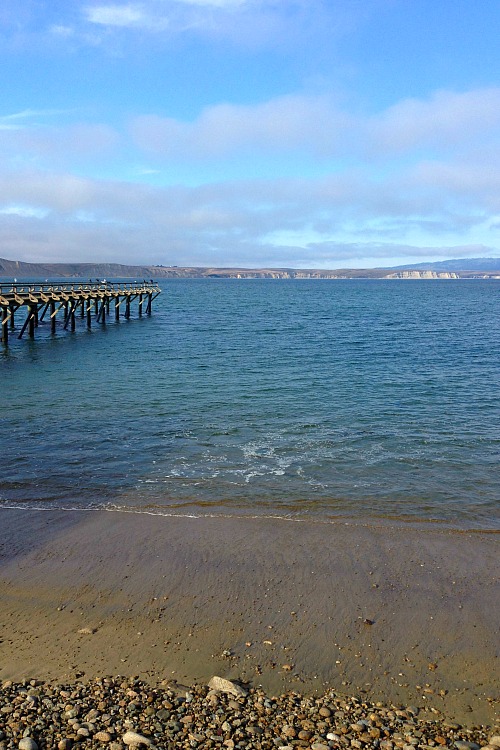
It was an emotional experience and truly put into perspective everything that the volunteers worked so tirelessly for.
Since my time in California, I have been continuing to follow the work of both The Marine Mammal Center and International Bird Rescue. Recently, International Bird Rescue has been in crisis mode as they deal with rescuing hundrends of birds in the San Francisco Bay area that have been turning up covered in a “mystery goo”.
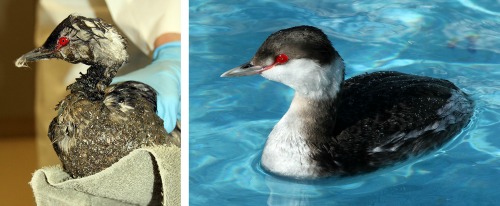
{source}
This mysterious rubber cement- like substance mats the seabirds feathers, causing them to lose their natural insulation, become hypothermic, and, eventually, die. Volunteers at IBR have been working around the clock to clean and care for these birds, using baking soda, vinegar, and Dawn detergent to loosen and wash out the substance. While some of the birds have already been treated and released, there are still many more that need help. Costs for caring for all of these birds are running close to $10,000 per day, so more donations are needed to help the remaining birds. You can head over HERE for more information on the facility or to donate.
The Marine Mammal Center is also experiencing a higher than typical number of patients for this time of year. Just four days into 2015, TMMC rescued their first abandoned seal pup of the year, Yule.
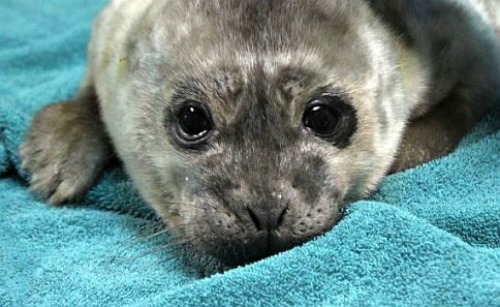
{source}
Seriously. How cute is he???
While Yule is getting stronger every day, he is no longer the only pup that is being taken care of at The Marine Mammal Center. Currently, they are experiencing monthly record breaking numbers of patients and have been getting up to 10 new sea lion pups per day. The high increase in numbers can be partially attributed to a number of reasons including changing water temperatures and weather conditions that affect the fish and nutrient locations in the ocean, and increases in toxic algal blooms; however, TMMC continues to do research to determine other possible explanations for the large increase of malnutritioned pups.
If you live along the California coast, and happen to come across a sea lion pup on the beach, please do not approach it. It is actually common practice for the momma sea lions to leave their pups on the beach while they go out hunting for food; however they will quickly abandon them if they notice humans in the vacinity. As tempting as it is to try and help these cute little guys, the best thing you can do for them is to call The Marine Mammal Centre {You can find their contact information HERE}. They will have then have an expert monitor the situation to determine if further action is needed.
To learn more about The Marine Mammal Center check out their website or go HERE to donate. The cute little seal pups will thank-you! 🙂
Leave a Reply